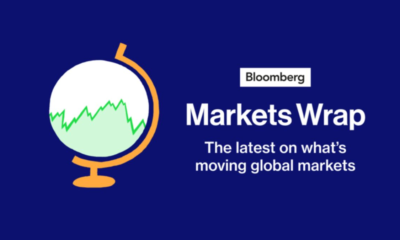AI Insights
Apple's top executive in charge of artificial intelligence models, Ruoming Pang, is leaving for Meta – Bloomberg News – MarketScreener

AI Insights
Cegid Retail refines its approach to the challenges of artificial intelligence for commerce

Published
September 14, 2025
Last year, Lyon-based management solutions specialist Cegid announced that it was bringing its Forward 2026 development strategy into line with generative artificial intelligence. Renamed Forward.ia, the development program continues, in particular for the Cegid Retail division, which is stepping up deployment and experimentation of retail solutions, while taking care not to fall into the trap of multiplying useless generative tools.
“Our approach has always been to make innovation useful and not to create gas factories that serve no one,” Nathalie Echinard, general manager of the retail division, tells FashionNetwork.com. “Nevertheless, we know that AI and generative AI will transform the business, both for our team internally and for our customers.”
Last year’s biennial Cegid Connections Retail event in Rome featured eight AI use cases anticipating the needs of commerce to 2030. Four have since been delivered. Starting with an enhancement to the Livestore checkout solution. This now enables a sales assistant to interact with customers with whom they do not share a common language, via a split screen.
The Cegid Retail Store Excellence tool, used for communication between a head office and its store network, has also been enhanced. “It can now translate and send messages to each store, for example to explain a new collection, in the case of fashion brands”, explained Echinard. The manager also points out that AI can now directly generate message bases or visuals to guide sales teams.
In the apparel business, these teams are subject to high turnover and have no time for training. In the past, Cegid has responded to this need with simplified dashboards that are easy to learn. But AI now enables the salesperson to exchange directly with the system verbally to explain their problem, so as to be guided through the task.
“We’re gradually moving towards an augmented sales assistant,” explained Echinard. “Augmented vis-à-vis the customer, but also in terms of efficiency and time optimization. Applications will help them to choose their priorities according to what’s happening in the store, but above all to navigate from one task to another without really realizing it.”

Personalization has not been forgotten. A tool, presented last year to Cegid’s partners, is currently being developed based on customer data and product recommendation learning. AI will reinforce the Livestore tool by helping the sales assistant to identify the needs of existing tastes and customers.
“This takes the form of a 6-8 word cloud that gives maximum information in a short space of time to the salesperson. After all, no one wants a sales assistant who remains immersed in the tablet”, explained the Cegid Retail manager.
A manager who also bears witness to the growing demands of brands in terms of security. Security breaches, cyber-attacks and data ransomware are on everyone’s mind. “When our customers are major players in the luxury goods and CAC40 sectors, we take this very seriously”, sais Echinard. She points out that, by contract, security updates are the only ones Cegid can launch to warn its customers.
“And, given what’s at stake, no brand has a problem with that,” said Echinard.
After the NRF (formerly Paris Retail Week) trade show, to be held in Paris from September 16 to 18, she will be preparing the 2026 edition of Cegid Connections Retail, to be held in Prague in the spring. Perhaps by then, the market will have taken a more rational look at AI.
“The enthusiasm it generates needs to stabilize, and everyone needs to stop going off in all directions,” concluded Echinard. She is mindful of the Gartner study which, last June, estimated that 40% of AI tools in development could be abandoned by 2027.
This article is an automatic translation.
Click here to read the original article.
Copyright © 2025 FashionNetwork.com All rights reserved.
AI Insights
IAB Europe unveils framework for AI publisher compensation

According to IAB Europe Data Analyst Dimitris Beis, the framework addresses “a paradigm of publisher remuneration for content ingestion” through three core mechanisms: content access controls, discovery protocols, and monetization APIs. The 11-page document establishes technical specifications for AI platforms accessing publisher content.
The framework emerges from documented traffic disruptions affecting digital publishers. According to Similarweb data cited in the report, referrals from AI platforms increased 357% year-over-year in June 2025, reaching 1.13 billion visits compared to 191 billion visits from organic Google search. However, news and media sectors experienced 770% traffic growth from AI platforms during the same period.
Subscribe PPC Land newsletter ✉️ for similar stories like this one. Receive the news every day in your inbox. Free of ads. 10 USD per year.
Cloudflare CEO Matthew Prince, speaking at a Cannes event, described shifting economics in content crawling. According to the framework, Prince reported the ratio of pages crawled to visitors referred increased from 2:1 a decade ago to 6:1 at the beginning of 2025 and 18:1 in June. OpenAI’s ratio reportedly grew from 250:1 to 1,250:1 during this timeframe.
The framework contradicts Google’s August rebuttal claiming stable year-over-year referrals from organic search. According to Chartbeat research covering 565 US and UK news websites, search referral consistency has been maintained over the past year. Google acknowledged certain query types may not generate clicks, similar to previous features like sports scores.
Adobe research conducted between July 2024 and February 2025 revealed AI-referred visitors stayed 8% longer on sites, viewed 12% more pages, and showed 23% lower bounce rates. However, these visitors lagged 9% behind non-AI-referred users in conversion rates.
The IAB framework proposes blocking unauthorised scraping through robots.txt files and Web Application Firewall methods. According to the document, unauthorised scraping increased 40% from Q3 to Q4 2024, with robots.txt compliance declining significantly.
Three content discovery mechanisms form the framework’s second component. Publishers would implement content access rules pages containing usage terms, scraper instructions, contact information, and content metadata. JSON-based content metadata would provide site summaries and IAB content taxonomy mappings. An llms.txt markdown file would contain information digestible by large language models.
The monetization component introduces Cost-per-crawl (CPCr) APIs featuring tiered pricing based on content type, bot classification, and access frequency. According to the framework, a more sophisticated LLM ingest content API would support per-query pricing through bid-response exchanges, enabling real-time content valuation.
The per-query model addresses retrieval-augmented generation, where AI platforms query publisher content directly rather than using pre-trained datasets. According to the document, this approach “more closely tracks value extracted from using publisher content and facilitates a fairer deal than cost-per-crawl.”
The framework identifies three implementation challenges. Controlling content access requires commitment from AI operators beyond technical measures, as multiple investigations suggest robots.txt compliance varies significantly. Auction dynamics differ from advertising markets, with single AI operators typically bidding rather than multiple competing buyers.
Content valuation presents complexity in determining marginal benefits of additional content for LLM responses. According to the framework, pricing decisions become probabilistic when based solely on metadata, potentially requiring verification mechanisms before content licensing.
Alternative models include revenue-sharing subscriptions, where Perplexity distributes 80% of user fees to participating publishers based on engagement metrics. Bilateral licensing agreements between major publishers and AI platforms provide direct compensation but concentrate benefits among large content creators.
Collective licensing schemes, similar to music rights societies, would create central compensation pools distributed according to usage measurements. According to the framework, this model requires regulatory action and allocation consensus.
Buy ads on PPC Land. PPC Land has standard and native ad formats via major DSPs and ad platforms like Google Ads. Via an auction CPM, you can reach industry professionals.
The framework establishes three requirements for viable compensation models. Effective content access control must reliably block unauthorised scraping. Purpose-limited use assurance prevents single-query content from training dataset repurposing. Transparency in pricing and trade-offs provides publishers visibility into content usage and valuation.
Current conditions fail to meet these requirements. According to the document, unauthorised scraping continues rising as the root cause of publisher concerns. Most publishers lack visibility into content usage after access, with only large publishers securing protections through bespoke AI operator agreements.
Cloudflare recently introduced AI crawler blocking capabilities and piloting systems where AI platforms declare content access purposes while publishers control permissions. According to the framework, the company develops signed requests and mTLS technologies for strengthening crawler identification.
IAB Tech Lab CEO Tony Katsur has advocated for regulatory intervention, urging publishers to advocate for their interests. According to the document, structural solutions enforcing access control, transparency, and verifiable usage represent prerequisites before remuneration models can function at scale.
The marketing community faces significant implications from these developments. Publishers experiencing declining traffic revenues must evaluate alternative monetization strategies beyond traditional advertising models. AI-powered search features reduce click-through rates while maintaining content dependency for training and inference processes.
Campaign strategies may require adaptation as zero-click searches increase and publisher content appears in AI summaries without corresponding traffic. Performance measurement frameworks need updating to account for content usage in AI responses rather than website visit metrics.
The framework represents industrywide momentum toward formalised compensation structures. According to the document, remuneration models likely diverge rather than converge on single mechanisms, with publishers anticipating patchwork approaches depending on market position and jurisdiction.
IAB Europe’s Artificial Intelligence Working Group seeks European publisher collaboration. The working group can be contacted through Dimitris Beis at beis [at] iabeurope [dot] eu for participation information.
Subscribe PPC Land newsletter ✉️ for similar stories like this one. Receive the news every day in your inbox. Free of ads. 10 USD per year.
Timeline
Subscribe PPC Land newsletter ✉️ for similar stories like this one. Receive the news every day in your inbox. Free of ads. 10 USD per year.
Summary
Who: IAB Europe Data Analyst Dimitris Beis authored the framework. The initiative involves publishers, AI platforms, and the IAB Tech Lab working group seeking European publisher collaboration.
What: A technical framework establishing three mechanisms for AI platform compensation to publishers: content access controls, discovery protocols, and monetization APIs including Cost-per-crawl and LLM ingest content APIs.
When: Published in September 2025, following industry discussions throughout 2025 including the July IAB Tech Lab summit and August working group launch.
Where: The framework applies globally but emphasises European implementation through IAB Europe’s Artificial Intelligence Working Group collaboration with European publishers.
Why: Addresses declining publisher revenues from increased AI content scraping (357% growth year-over-year) and zero-click searches (rising from 56% to 69% in May 2025) while establishing fair compensation for content used in AI training and inference.
AI Insights
Planned artificial intelligence centers strain energy grid – El Paso Inc.
-

 Business2 weeks ago
Business2 weeks agoThe Guardian view on Trump and the Fed: independence is no substitute for accountability | Editorial
-
Tools & Platforms1 month ago
Building Trust in Military AI Starts with Opening the Black Box – War on the Rocks
-

 Ethics & Policy2 months ago
Ethics & Policy2 months agoSDAIA Supports Saudi Arabia’s Leadership in Shaping Global AI Ethics, Policy, and Research – وكالة الأنباء السعودية
-

 Events & Conferences4 months ago
Events & Conferences4 months agoJourney to 1000 models: Scaling Instagram’s recommendation system
-

 Jobs & Careers3 months ago
Jobs & Careers3 months agoMumbai-based Perplexity Alternative Has 60k+ Users Without Funding
-

 Podcasts & Talks2 months ago
Podcasts & Talks2 months agoHappy 4th of July! 🎆 Made with Veo 3 in Gemini
-

 Education3 months ago
Education3 months agoVEX Robotics launches AI-powered classroom robotics system
-

 Education2 months ago
Education2 months agoMacron says UK and France have duty to tackle illegal migration ‘with humanity, solidarity and firmness’ – UK politics live | Politics
-

 Funding & Business3 months ago
Funding & Business3 months agoKayak and Expedia race to build AI travel agents that turn social posts into itineraries
-

 Podcasts & Talks2 months ago
Podcasts & Talks2 months agoOpenAI 🤝 @teamganassi




















